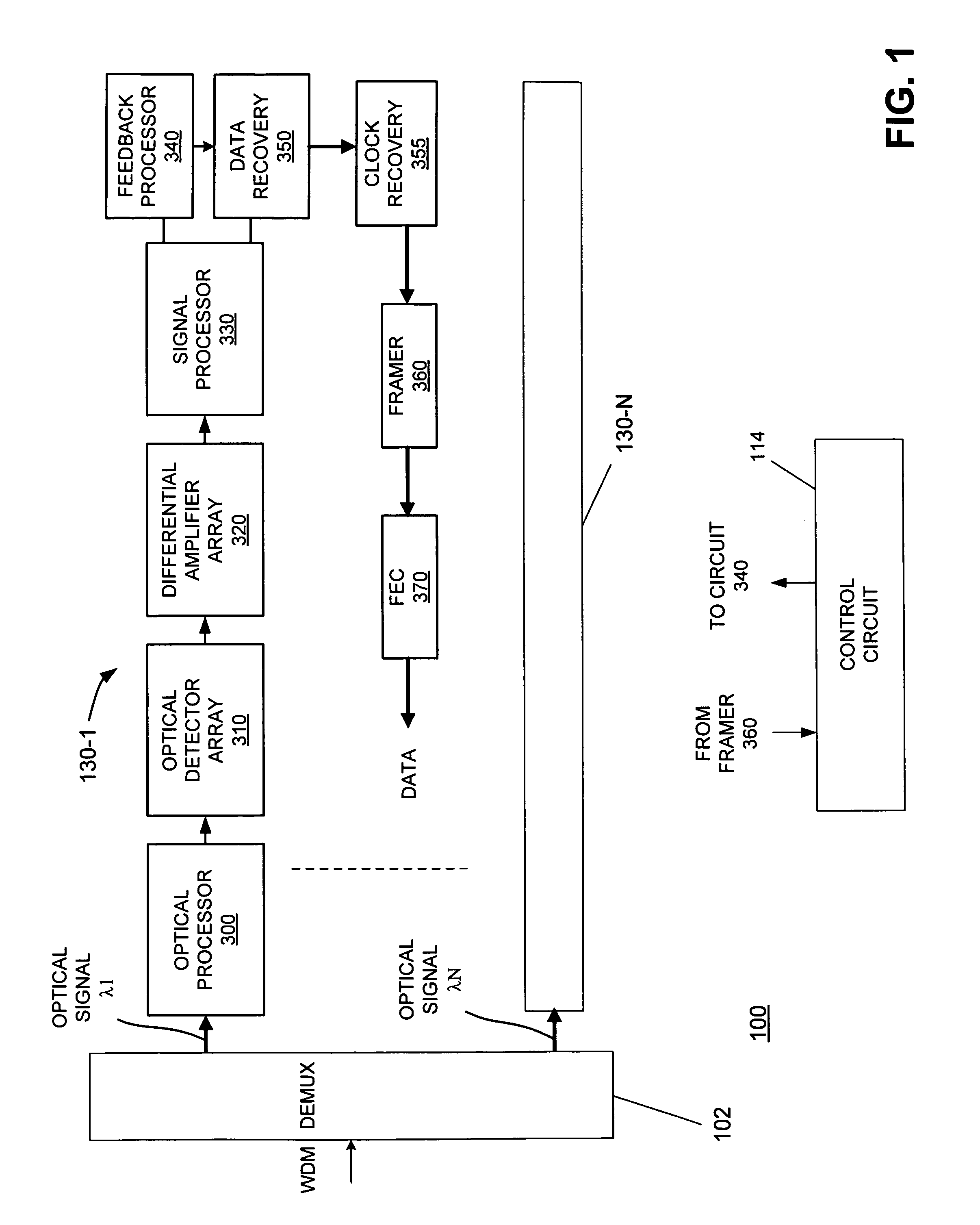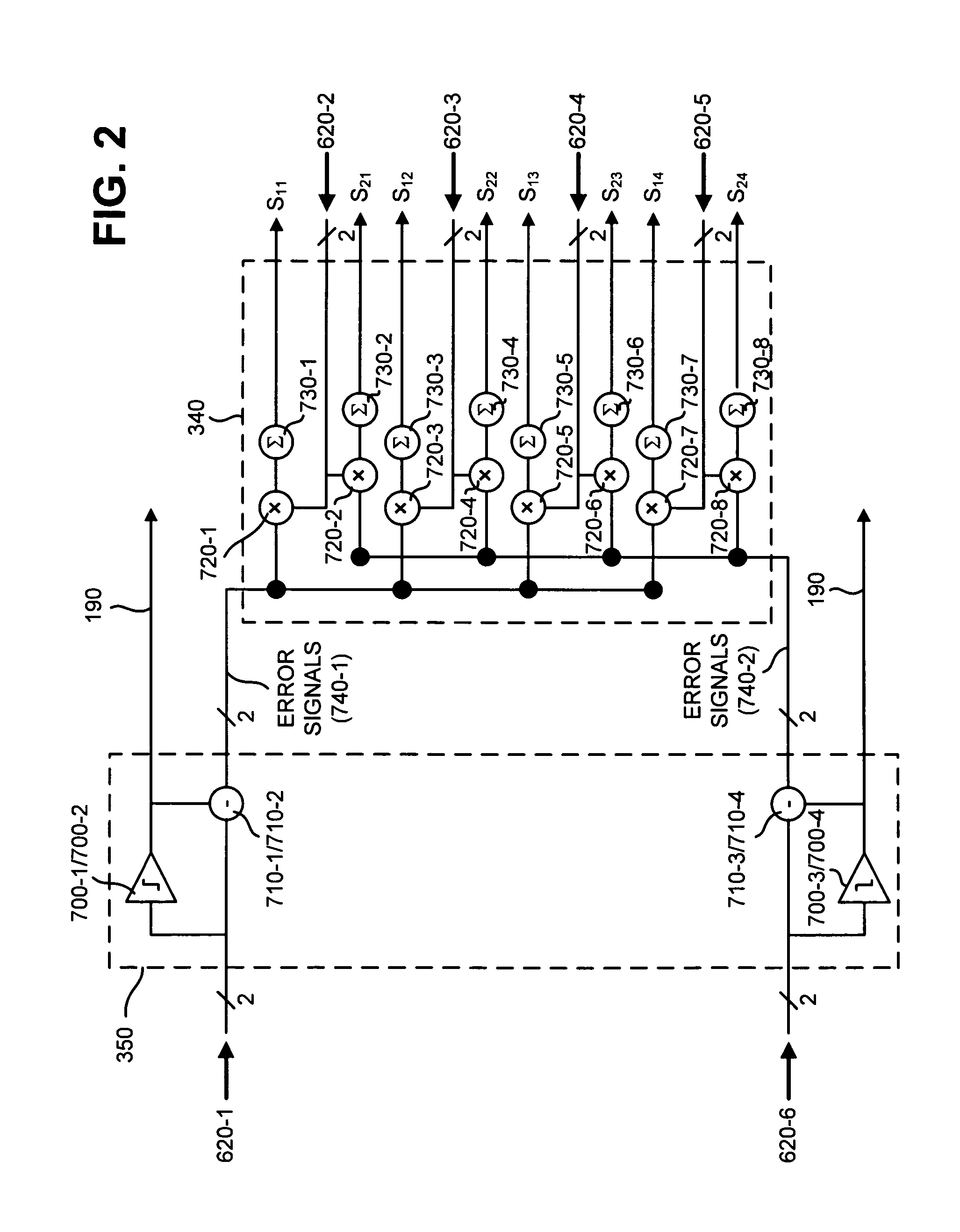Method and system for control of communication equipment based on a bit error rate derived from a frame alignment signal
a communication equipment and frame alignment technology, applied in the direction of transmission monitoring, instruments, coding, etc., can solve the problems of not being able to correct for an unlimited number of data errors, often occurring errors during transmission of data, and exceeding the capability of fec error correction capability
- Summary
- Abstract
- Description
- Claims
- Application Information
AI Technical Summary
Benefits of technology
Problems solved by technology
Method used
Image
Examples
Embodiment Construction
[0015]As generally understood, data is often transmitted to a receiver in frames that include header and payload portions. The payload typically carries the data itself and the header includes monitoring and network management information, for example. The header also includes a series of predetermined bits that indicates the start of a frame (often referred to as a frame alignment signal). Although the frame alignment signal may include errored bits, if the number of errored bits is below a predetermined amount, the frame alignment signal may still be recognized. Consistent with the present disclosure, circuitry may be provided in the receiver that can determine a bit error rate (BER) by dividing the number of errored bits by the number of bits in the frame alignment signal. Accordingly, although an optical signal may be severely degraded and forward error correction (FEC) cannot be performed, a BER may be obtained if the frame alignment signal can be identified. In addition, the b...
PUM
 Login to View More
Login to View More Abstract
Description
Claims
Application Information
 Login to View More
Login to View More - R&D
- Intellectual Property
- Life Sciences
- Materials
- Tech Scout
- Unparalleled Data Quality
- Higher Quality Content
- 60% Fewer Hallucinations
Browse by: Latest US Patents, China's latest patents, Technical Efficacy Thesaurus, Application Domain, Technology Topic, Popular Technical Reports.
© 2025 PatSnap. All rights reserved.Legal|Privacy policy|Modern Slavery Act Transparency Statement|Sitemap|About US| Contact US: help@patsnap.com



